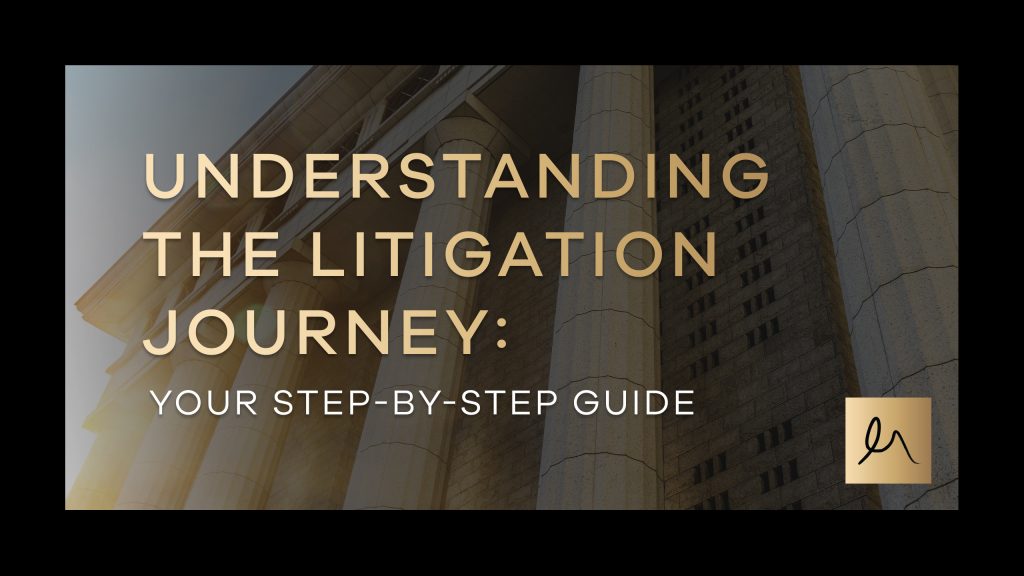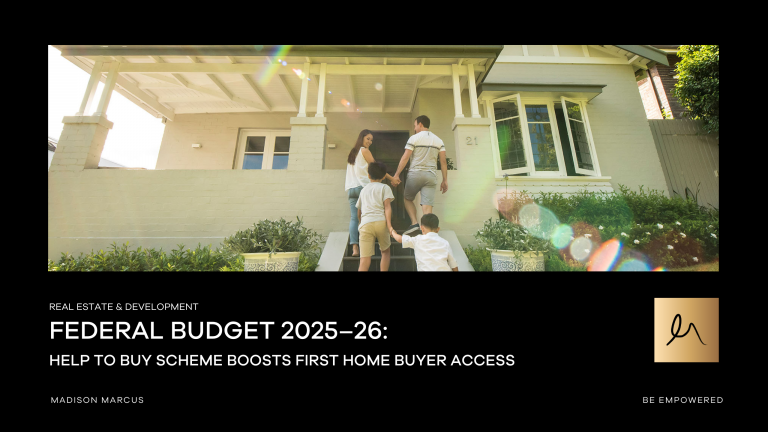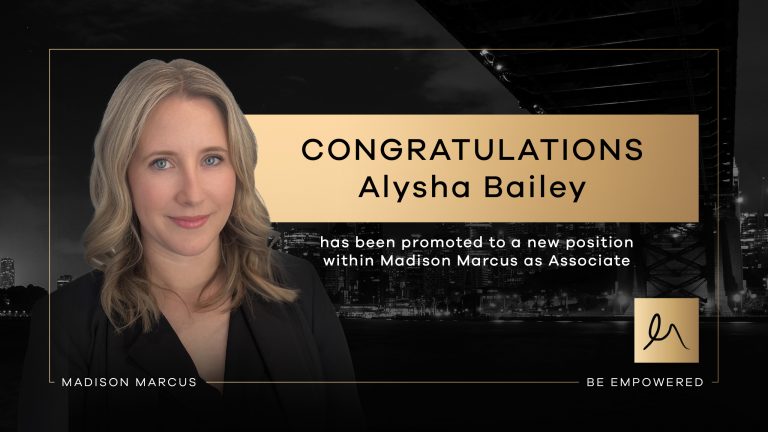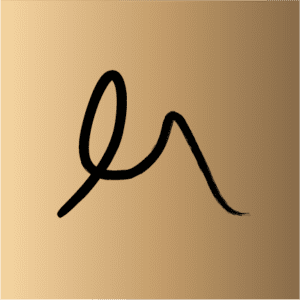Most people try to avoid going to Court as the process can be long, stressful and expensive, whether you are prosecuting or defending a claim. However, there are circumstances in which you may be left with no choice but to litigate, despite your genuine attempts to come to a resolution beforehand.
The rules in each New South Wales and Commonwealth jurisdiction vary slightly in terms of the specific rules and processes, however, the overarching steps involved are generally analogous. The following flowchart is an overview of the usual litigation process.
Please note that the contents of this note and the flowchart below are general in nature only and is to be used as a guide to the legal processes involved in civil and commercial disputes in New South Wales and the Commonwealth.
Usual steps in litigation proceedings
Letter of DemandIf attempts to resolve a dispute between the parties are unsuccessful, you can issue a formal letter of demand providing a final opportunity to the other party to undertake certain steps (whether it be to pay a debt, cease engaging in certain conduct, or otherwise, resolve the dispute before commencing proceedings. |
Commencing proceedingsThe document (commonly referred to as an originating process) used to commence proceedings will depend on which Court you are filing in and what your claim is, however, proceedings are most commonly commenced by way of a statement of claim. This is a court document which sets out the relevant facts which underpin the causes of action pursued and the relief claimed. A sealed (filed) copy of the statement of claim must also be personally served on the defendant/s. If service cannot be effected, an application for substituted service can be filed by the plaintiff to allow an alternate service method. |
DefenceA defendant typically has 28 days from the date of service of the statement of claim to file a court document in response to an originating process. The type of document may differ depending on the originating process filed but typically includes a defence or a list response. If the defendant is of the view that the statement of claim is not sufficiently particularised (i.e., does not contain enough information for the defendant to understand the case it is required to meet), the defendant may request further and better particulars from the plaintiff. |
Cross ClaimThe defendant may file a cross claim if it believes it is entitled to other relief from the plaintiff or a third party and the defendant’s claim relates to the plaintiff’s claim. A cross claim will proceed in the same manner as a statement of claim, requiring a defence to be filed. |
ReplyThe plaintiff has an opportunity to file a further document known as a reply if it is of the view that there are certain matters raised in the defence that need to be specifically addressed. |
Plaintiff’s EvidenceThe plaintiff will be required to file its evidence, which includes lay evidence (affidavits/statements given by relevant witnesses to support the statement of claim) and, if applicable, expert evidence (depending on the nature of the case). |
Defendant’s EvidenceThe defendant will be required to file its evidence in response. This would also include lay evidence (and expert evidence if necessary), which supports the defence. |
Plaintiff’s Evidence in ReplyThe plaintiff may also file evidence in response to the defendant’s evidence usually if a new matter has been raised in the defendant’s evidence that was not raised by the plaintiff in the plaintiff’s evidence in chief. |
Mediation / Informal Settlement ConferenceA meditation or informal settlement conference can be requested by any party and ordered at any time by the Court. The most common time for this to occur is after service of evidence and prior to a final hearing to allow each party to understand the other side’s case. If the parties are required to attend a mediation, then a third-party mediator will need to be engaged. The costs of the mediator are usually shared equally between the parties. |
Final HearingIf the matter proceeds to a final hearing, it will be heard in Court. The length of the hearing will depend on a number of factors including the complexity of the matter, number of witnesses and volume of evidence. Each party will usually prepare written submissions prior to the hearing to be submitted to the Court along with a Court Book which will include all of the relevant evidence and material for the presiding officer hearing the matter to review and refer to throughout the hearing. During the hearing, the plaintiff usually presents its case first with the defendant following. Witnesses may be called to attend and be cross-examined. A judgment will be delivered to the parties following the hearing including reasons for the determination. If a party does not comply with orders made on a final basis, the beneficiary of those orders can then take further enforcement steps against the obligor to enforce the final orders. |
Additional matters which may arise during proceedings
In addition to the usual steps within the litigation process, there are various other matters which may arise. By way of example:
Production (Discovery, Notices to produce, Subpoenas)A party (or a non-party) can be ordered to produce documents or things during litigation. Notices to produce and subpoenas are formal requests made by parties to a proceeding for production of certain documents or things. Notices to produce are issued to parties in the proceedings and subpoenas are issued to third parties. Compliance is mandatory; however, the requested material must be (amongst other things) relevant to the issues in the proceedings. A party to the proceedings, or the recipient, can file an application to set aside a notice to produce or subpoena if it is, amongst other things, not compliant with relevant rules, unduly burdensome or not relevant to the matter. Discovery is the process by which a party must provide the other party with documents that are relevant to the case. Discovery can be ordered on a “general” basis, which requires the parties to ascertain for themselves what documents are relevant to a fact in issue on the pleadings, or by “categories”, in which case the parties are required to produce all documents in their possession or control by reference to each category. The purpose of discovery is to ensure that the parties can fully understand the details of the case, obtain proper advice on their prospects and sufficiently prepare for a final hearing. |
Notices of Motion / Interlocutory ApplicationsA notice of motion is an application to the court which can be filed by either party during a proceeding. The purpose of a notice of motion is to resolve interlocutory disputes. A notice of motion is typically accompanied by an affidavit in support being the evidence the filing party relies on for the relief it is seeking. Some legal issues dealt with by way of notice of motion include:
|
After the proceedings (Enforcement)
Following the conclusion of the proceedings, the successful party has various enforcement options available to it including:
Garnishee OrderA Garnishee Order is an order from the Court directing a bank or financial institution to pay funds from a judgment debtor’s account up to the judgment. To apply for a garnishee order, the party is to file a notice of motion and supporting affidavit with the details of the judgment and relevant bank account. |
Examination NoticeAn Examination Notice can be issued to an individual, including a company director requiring the person to respond to specified material questions and/or produce for inspection any specified documents in relation to the material questions. This option will provide the party with a further insight into the financial position of the judgment debtor, which can assist in circumstances where a payment plan is being considered. |
Examination OrderIf the judgment debtor does not respond to the Examination Notice within 28 days, the judgment creditor can apply to the court for an Examination Order, which requires the individual or company director to attend court and answer those questions. |
WritsA Writ for the delivery of goods authorises a sheriff to seize goods that have not been returned, despite a Court order to do so. A Writ for levy of property authorises a sheriff to seize and sell at auction personal property belonging to the judgment debtor to pay the debt. |
Bankruptcy Notice (Individual)If the judgment debt is more than $10,000, the creditor can issue a Bankruptcy Notice which requires compliance (payment of judgment debt) within 21 days. |
Creditor’s Statutory Demand (Company)If the judgment debt is more than $2,000, the creditor can issue a Statutory Demand which requires compliance (payment of judgment debt) within 21 days. |


Creditor’s Petition (Bankruptcy Application)In the event of non-compliance with the Bankruptcy Notice, the judgment creditor may then make an application to the Federal Court seeking a sequestration order. |
Wind Up ApplicationIn the event of non-compliance with the Statutory Demand, the creditor can apply to Court seeking for the debtor company to be wound up. |
At Madison Marcus, we provide expert guidance and representation through every step of the litigation process. Let our experienced team support you in achieving your legal goals.
MM Website Enquiry Form
Form used to capture all MM website enquires. Will be used in Monday and Mailchimp via Zapier
"*" indicates required fields







